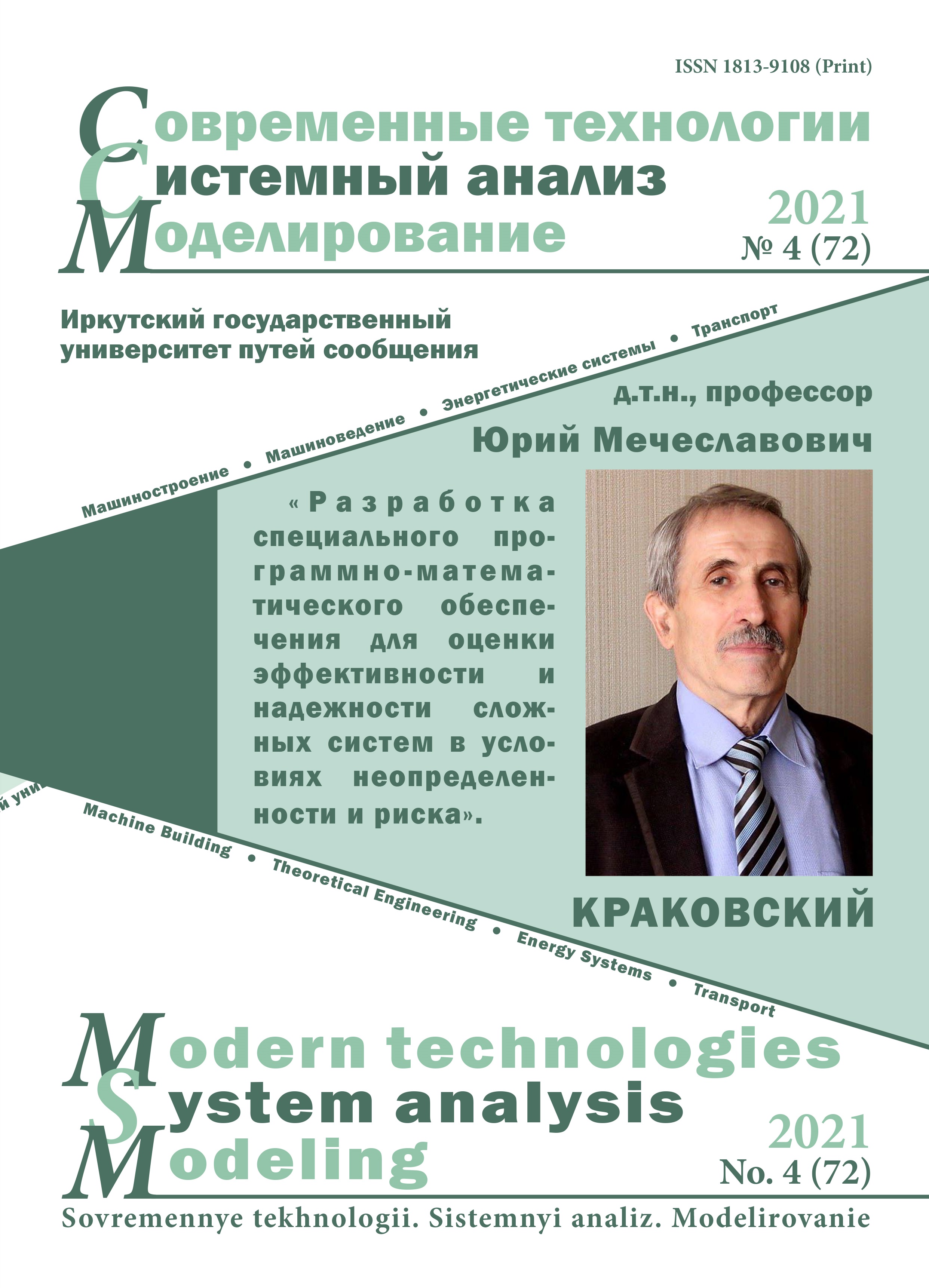On the influence of delays in route trains on the recovery of train graphics
Keywords:
railway transport, ring route train, train schedule, deviations from the planning schedule, train delay, temporary lossesAbstract
The main goal of railway transport is the timely delivery of passengers and goods, which cannot always be achieved. In the course of its work railway transport is faced with emergency situations: technical, technological, natural and man-made. In the event of such failures, the main thing is considered to be the minimization of time losses, and the reduction of the duration of system recovery. The size of time losses depends on the nature of the failure, the place of its occurrence, the organization of work to eliminate the consequences. Thus, the failure of the rolling stock at the station results in smaller losses than the failure arising on the stretch with the same rolling stock. The abnormal situation that appeared on the stretch of the double-track section, in general, will require fewer adjustments in the planned order of train passage than on the single-track section. Also, the duration of the restoration of the traffic management system depends on the category of the train delayed due to the failure. The article presents an original approach to describing the process of running circular block trains in the event of a failure, in which the train leaves the starting station with a delay. An algorithm for restoring the system of route reversal on a single-track section is presented, which describes the correction of the system and the result of the failure. The graph of the movement of trains in the coordinate system is depicted, which made it possible to estimate the deviations from the schedule of movement geometrically. Based on such an assessment, a mathematical model of a stable state of the system of running circular block trains is proposed. The proposed description of the stability of the circular routes running, in the form of a model, will make it possible to estimate the train schedule depending on the magnitude of the delays of the described category of trains and the number of constant linear dependencies.
References
Доможирова А.Д., Упырь Р.Ю. Повышение стабильности курсирования кольцевых маршрутных поездов // Моло-дая наука Сибири. 2021. №. 1. С. 183–186.
Царегородцева Е.Ю., Упырь Р.Ю. Инновационные подходы в управлении логистикой на транспорте // Транспорт Азиатско-Тихоокеанского региона. 2021. №. 1. С. 14–17.
Malovetskaya E.V. et al. Planning of qualitative indexes of railroad operational work in polygon technologies // IOP Con-ference Series: Materials Science and Engineering. IOP Publishing, 2020. Т. 760. №. 1. С. 012041.
Гильманов А.И., Дорогайкина Е.В., Залогова О.И. Исследование факторов, влияющих на простой транзитных ва-гонов с переработкой на сортировочных станциях // Молодая наука Сибири. 2019. №. 1. С. 98–104.
Александров А.Э., Ковалев И.А. Построение автоматизированного процесса управления обращением кольцевых маршрутов // Транспорт Урала. 2007. №. 1. С. 41–47.
Александров А.Э., Тимухина Е.Н., Ковалев И.А. Оптимизационная модель перевозочного процесса с использова-нием кольцевых маршрутов // Транспорт Урала. 2017. №. 4. С. 36–39.
Апатцев В.И., Шаров В.А. К реализации комплексной программы поэтапного перехода на организацию движения грузовых поездов по расписанию на российских железных дорогах // Наука и техника транспорта. 2011. № 3. С. 69–72.
Давыдов А.А. Организация вагонопотоков и маршрутизация перевозок при переходе на полигонные технологии эксплуатационной работы // Закономерности развития технических и технологических наук: материалы Междунар. науч.-практ. конф. Казань, 25 августа 2017. Уфа: Аэтерна, 2017. С. 15–18.
Шапкин И.Н., Кожанов Е.М. Технология обеспечения полновесности и полносоставности поездов, отправляемых по твердым ниткам графика // Вестник ВНИИЖТ. 2005. № 4. С. 5–7.
Мышкин И.И., Маловецкая Е.В. Организация эксплуатационной работы по твердым ниткам графика в увязке с ло-комотивным парком // Инфраструктура и эксплуатация наземного транспорта: материалы Междунар. науч.-практ. конф. В 2 ч. Ч. 1. Нижний Новгород, 10 апреля 2019 г. Нижний Новгород: НИЦ «21 век», 2019. С. 202–208.
Панин В.В., Колесникова Е.С. Маршрутизация перевозок грузов на сети железных дорог ОАО «РЖД» // Железно-дорожный транспорт. 2011. №. 2. С. 34–39.
Кужель А.Л., Шапкин И.Н., Вдовин А.Н. Сквозные технологии маршрутизации грузовых перевозок // Железнодо-рожный транспорт. 2015. № 7. С. 14–19.
Бессоненко С.А., Жарикова Л.С. О вопросе рационального определения нормативных сроков доставки грузов же-лезнодорожным транспортом // Научные проблемы транспорта Сибири и Дальнего Востока. 2015. № 4. С. 19–22.
Югрина О.П., Танайно Ю.А., Жарикова Л.С. Эффективность маршрутизации грузовых перевозок // Железнодо-рожный транспорт. 2020. № 6. С. 14–18.
Александров А.Э., Шипулин А.В. Использование имитационной системы Истра для моделирования графика дви-жения поездов // Транспорт Урала. 2011. № 4. С. 67–71.
Шаров В.А., Бородин А.Ф. Интегрированная технология управления движением грузовых поездов по расписанию // Железнодорожный транспорт. 2011. № 8. С. 11–21.
Перцов Д.Л. Маршрутизация лесных грузов // Вестник ВНИИЖТ. 1986. № 2. С. 9–12.
Сотников Е.А. Нормирование размеров неснижаемого резерва локомотивов на станциях их оборота // Вестник ВНИИЖТ. 2020. Т. 79. №. 1. С. 3–8.


